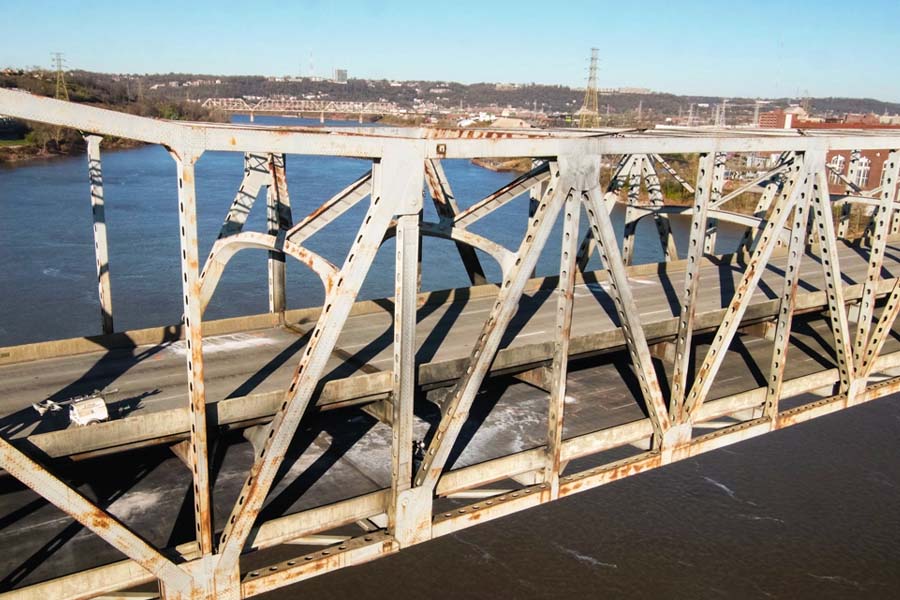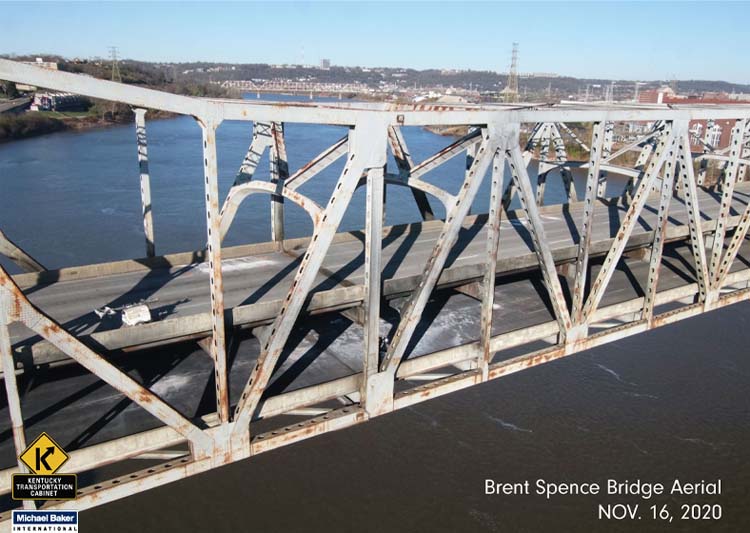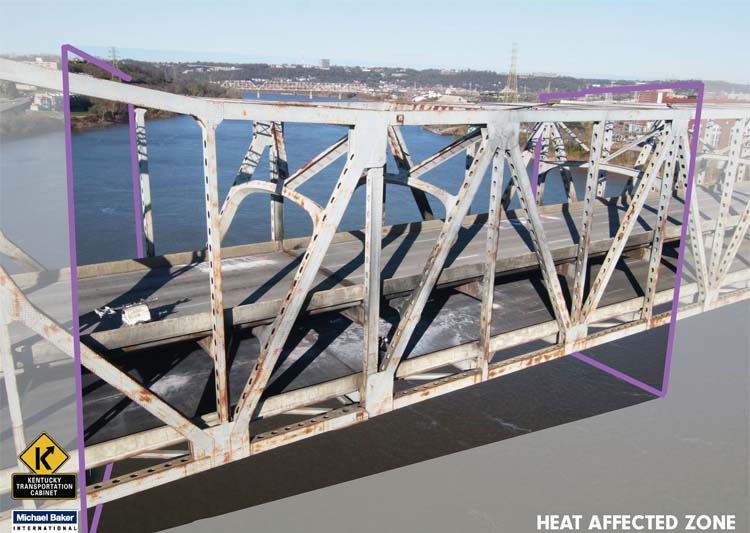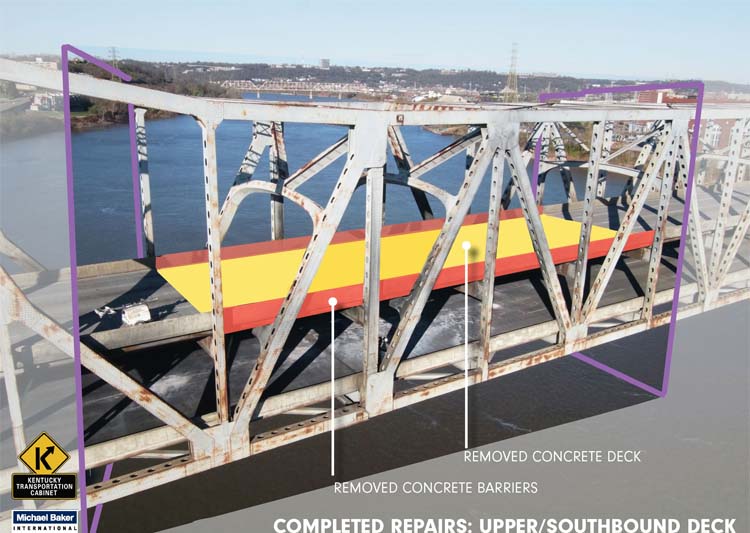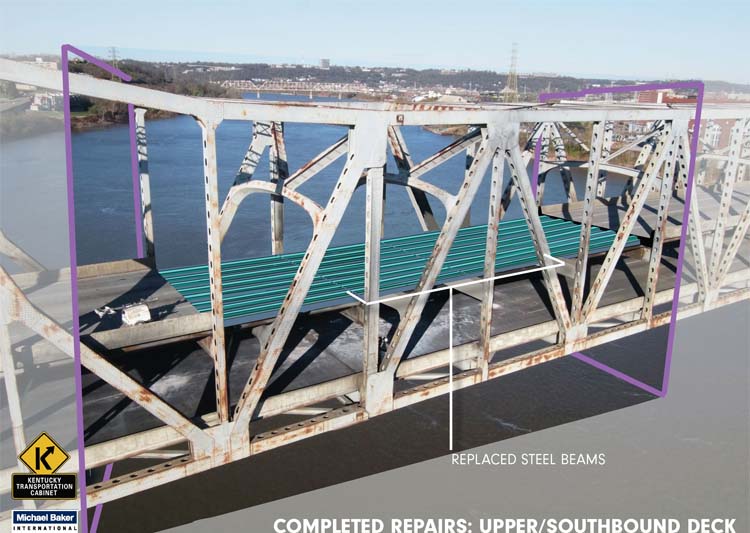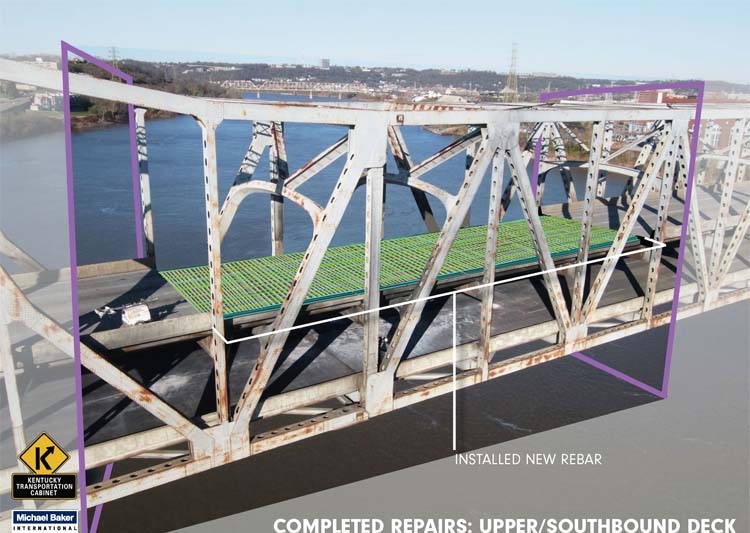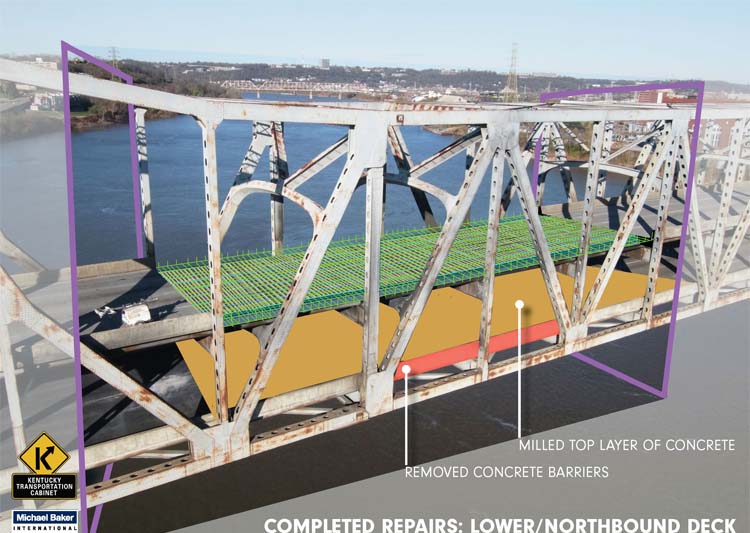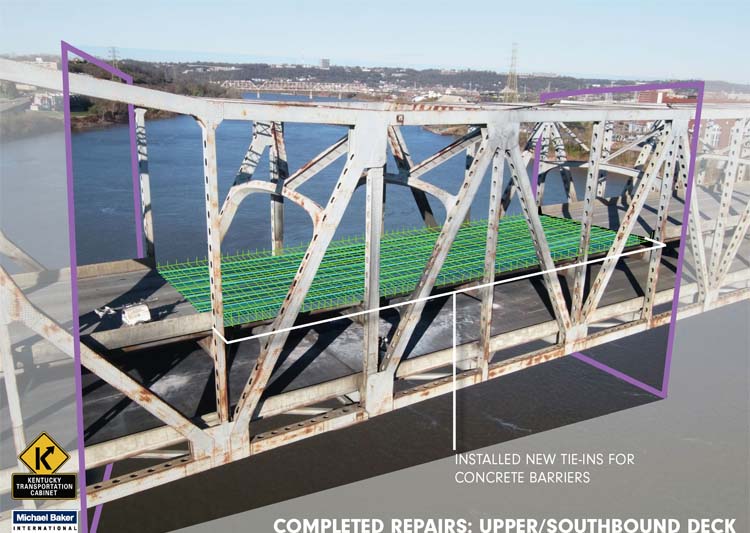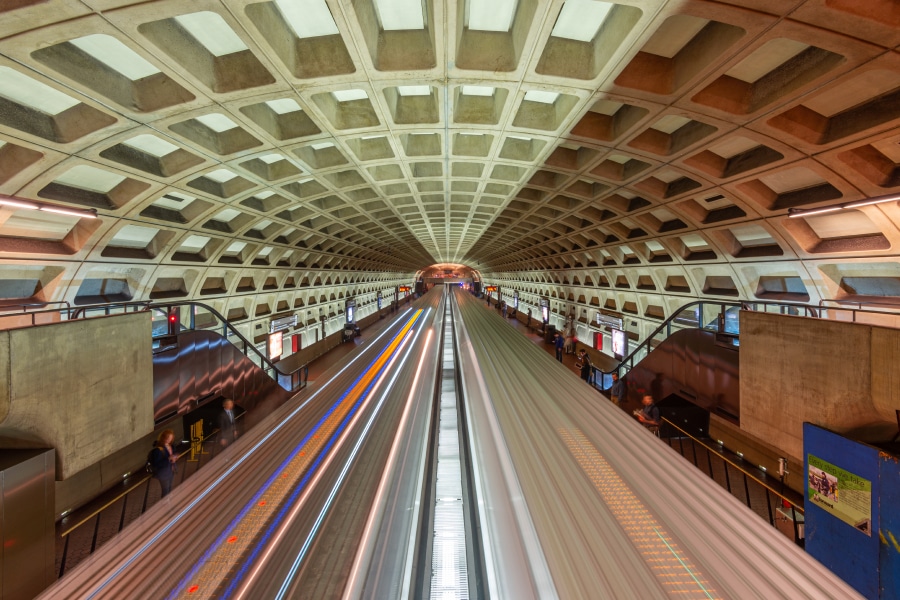In the early hours of Nov. 11, 2020, two semi-trucks collided on the lower (northbound) traffic deck of the two-deck Brent Spence Bridge in Covington, Kentucky.
The semi carrying potassium hydroxide burst into flame. No one was hurt, but the massive chemical fire that resulted had unquestionably damaged the bridge.
Every day, about 160,000 vehicles travel from northern Kentucky to Cincinnati on Interstates 71 and 65, crossing the Ohio River on the bridge, which serves as a critical link in one of the busiest commercial traffic corridors in the United States. That’s because Kentucky is within a day’s drive of two-thirds of the entire U.S. population.
The Kentucky Transportation Cabinet (KYTC) and Ohio Department of Transportation officials closed the bridge immediately. The Coast Guard, meanwhile, closed the Ohio River in the surrounding area to barges and other river traffic. The US Department of Transportation authorized up to $12 million in emergency relief reimbursement funding for repairs.
Drones were flown over, under and around the bridge to provide video that would give transportation officials an immediate sense of the damage.
“We have several FAA-certified drone pilots to assist in inspections,” explained Josh Rogers, P.E., transportation engineer and director of KYTC’s Division of Maintenance. “You want a closeup view before you send personnel [on the site].”
By the morning following the collision, debris from the accident had been removed. It was safe enough for KYTC inspectors to walk onto the bridge to examine each section of both decks.
The damage appeared to be less than the inspectors anticipated. Even close visual inspection, however, could not guarantee that the bridge had not sustained invisible damage.
The chemical fire could have caused internal damage that the inspectors couldn’t see. In time, this type of below-the-surface damage would weaken concrete decks or structural steel supports.
KYTC employees took three-inch core samples from the bridge’s steel girders. At a private lab in Louisville, metallurgists examined the samples under a microscope to check for chemical damage.
“Once the lab testing told us the critical supports were still strong and not compromised, the repair job became clear from an engineering and construction standpoint,” said KYTC Secretary Jim Gray.
The favorable lab report also meant that the Ohio River could be reopened. The Coast Guard announced lifting of the closure on Nov. 14, just three days after the crash.
KYTC officials determined that reopening the bridge would require:
- Removing and replacing a concrete section and steel support beams on the upper deck
- Milling out and replacing a concrete section on the lower deck
- Replacing a long section of concrete bridge railing
- Repairing the bridge’s electrical and drainage systems
Every part of that work would adhere to national construction and safety standards. “We follow national bridge inspection standards of the American Association of State Highway and Transportation Officials,” Rogers said.
There are construction companies that do only repair work on bridges, such as Lanford Brothers Company of Roanoke, Virginia. However, most companies that repair bridges also build them.
That is true for the construction firm that was awarded the emergency contract to repair the Brent Spence Bridge, Kokosing Construction of Westerville, Ohio.
To speed up the project, KYTC used its emergency bidding process. On Nov. 16, the agency declared Kokosing’s bid of about $3.1 million the winner. Additional costs for traffic control, extra steel and inspections would also be allowed.
KYTC heard continually from commercial truck drivers and commuting motorists, frustrated by traffic jams and detours, clamoring for a quick reopening of the bridge. Winter weather arriving in the near future made finishing the repair project even more urgent.
Kokosing agreed to have the repair work completed, and the bridge reopened to traffic, no later than Dec. 23, exactly six weeks after the accident.
With no time to lose, work began.
Planning for and scheduling specific parts of the work was the first task. But by Nov. 25, onsite work began in earnest with demolition of the upper deck.
Nov. 26 and 27 saw removal of the impacted stringer beams. On Nov. 28, demolition of the upper deck continued, with the removal of the outer barrier wall.
A significant part of the project took place from Nov. 29 to Dec. 1. Work crews installed new stringer beams to replace the damaged ones.
Dec. 5 and 6 were busy days. The upper deck’s deck pans were installed and the lower deck’s damaged barrier wall was removed.
Dec. 9 marked the start of the fifth week of work. Crews poured concrete on the lower deck and a new barrier wall.
On Dec. 14, crews milled the driving surface of the lower deck. They installed rebar for the upper deck barrier wall.
The bridge repair project passed final inspection on Dec. 21, and on Dec. 22, for the first time in nearly six weeks, traffic flowed on both decks of the Brent Spence Bridge. The project was finished—under budget and a day early.
Rogers described the joint effort of KYTC and Kokosing employees as “all hands on deck.” The time the project took “was pretty remarkable,” along with “the number of people we threw at it,” he noted.

